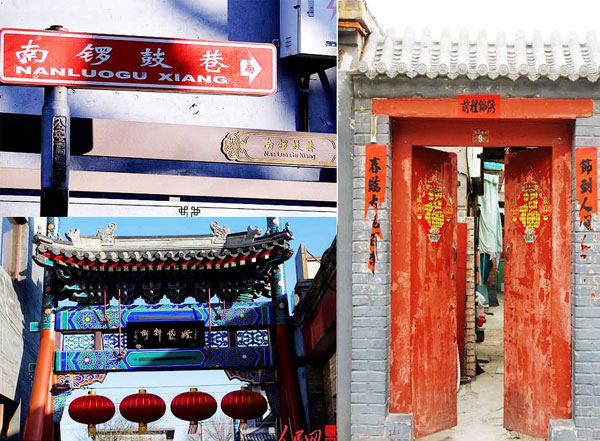
 |
|
[Photo/People's Daily Online] |
No one could tell the exact numbers of hutongs in Beijing. Numerous hutongs, broad or narrow, long or short, intertwined in the city of Beijing. It is no exaggeration to regard the culture of Hutongs as the culture of Beijing. Beijingers’ deep feelings to hutongs come from their love of family and homes in the alley.
Hutong, as a carrier of the ancient culture of Beijing, has an eternal charm. Beijing's hutongs witness hundreds of years of vicissitudes and historical changes. Here, each hutong is a mirror of history, and each house tells an old story. For those longing for real insight into the old appearance of Beijing's residential buildings, hutong is a must-see. Among all the various hutongs, we recommend you three must-sees: Nanluoguxiang , Yandai Xiejie and Wudaoying.
The bests of Beijing hutongs
The narrowest hutong-- Qianshi alley, which is 55 meters long, and is only 0.7 meters wide on average; the narrowest point is only 0.4 meters. Two people have to walk through the alley face to face.
The widest alley - Lingjing hutong, an east-west alley located in the Xidan area of Beijing. The widest part is 32.18 meters.
The longest hutong – Dongjiaomin Xiang. The total length of the hutong is nearly 3 kilometers.
The shortest alley – Yichi Alley. It is also known as one-foot alley with a total length of 10 meters. There are only six houses in the alley.
Alley with the most corners – Jiuwan alley. Located in the eastern part of Xuanwu District, it has a total length of about 390 meters, with at least 13 turning corners.
The oldest alley - Zhuanta alley. Located near West pailou, it is known as the root of Beijing hutong. The alley came into being in Yuan Dynasty (1267-1368); there were 29 alleys at that time, but only one hutong was recorded, Zhuanta hutong.
 |
 |
